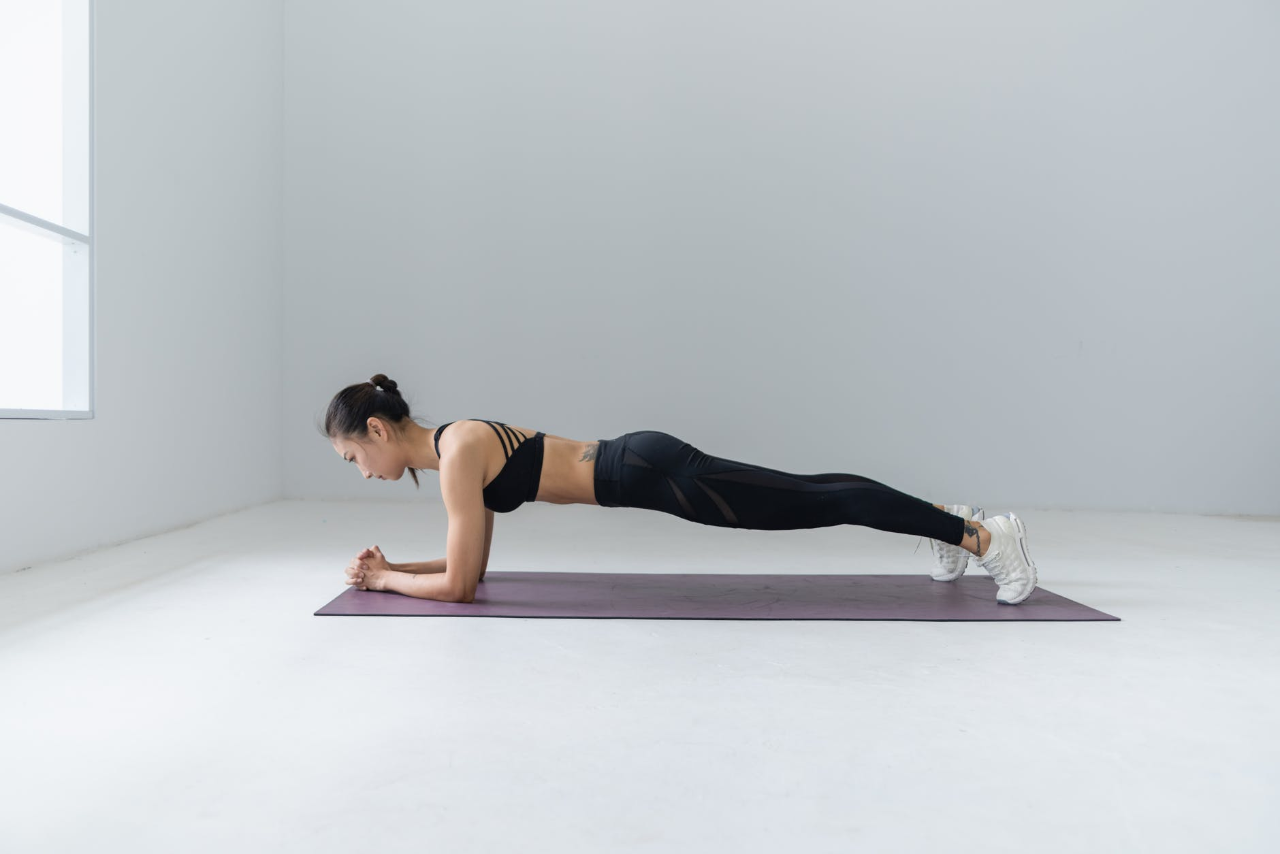
The A,B,C’s of Exercise Selection
A, B, C’s of Exercise Selection
This will be more of a common-sense piece, but I hope you get a little something out of it; namely, ensuring you are picking appropriate exercises in your routine, and not choosing exercises that will hurt you—which is the case more often than not for most folks. Most of you work out alone, so you want to be confident your exercises are actually doing what they are supposed to do. Further, what you LOOK like during an exercise is nowhere near as important as WHERE you “feel” the exercise. Keep reading and by the end, you will have a nice little system in place to choose the right exercises.
Here we go….
Any exercise you choose should follow a simple formula:
A: Alignment
B: Breathing
C: Control
Am I aligned right? Can I breathe correctly at any time during this movement? And can I control this movement, meaning can I look pretty doing it and not look like a wobbly train-wreck, like this:
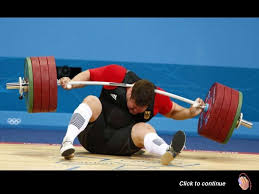
Right now, think of those exercises you do in your classes or in the gym (or your house these days!) that might sound like the train-wreck I just described. Odds are you aren’t aligned properly, aren’t breathing correctly during it (i.e. you are in a panicked state), and might not be fully in control while performing it. Any or All of these will actually make you worse off, regardless of the fact that you are “doing something”, rather than sitting on the couch.
Alignment
Alignment refers to something called joint centration, which is the “position of greatest inter-osseous contact between the bones to allow for optimal load transfer and maximum muscle pull”.
In English, joint centration is the ability to hold a joint in its ideal position, thereby allowing maximum loading with minimum wear-and-tear. You want to “share the wealth” with all parties (i.e. muscle and tissue) involved, and not let one guy have all the fame!
This is key to limiting unnecessary inflammation under stress. If you are not aligned right, and you add additional stress (i.e. load/weight), you are giving yourself detrimental wear-and-tear on your soft tissues, while also wasting your precious energy stores dealing with recovering from that inflammation, when those energy stores could be used for cool stuff, like the recovery of your muscles.
Who has time for that?!
I have a saying for this: You are “getting good at sucking”. It’s a real thing…
Here are 2 examples of “Bad” alignment:
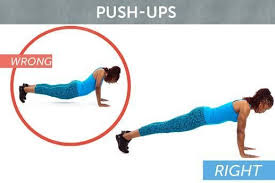
In the picture on the left, the woman’s spine is clearly out of alignment. The real kicker is that this kick-starts bad alignment everywhere else-what you hear people refer to as the “kinetic chain”.
Look at what her sagging back did to her head position….her shoulder position….it’s all off now…
In essence, she is out of centration in several places, which means everything about this exercise is going to make her suck in life faster. She won’t be “working” her chest/shoulders/arms as push-ups should; instead, she will be “working” her lower back and the front of her shoulders in a bad position, and she will gain all the BS that comes along with training a push up like that—imbalance of the musculature, wear and tear on the lower back, neck pain, amongst others. This might not happen THAT day, but keep training like that, and the consequences will find you… Hence why when people say “at least I’m doing something” or “its better than nothing”, I reply “you were better off staying on the couch” and at least staying safe..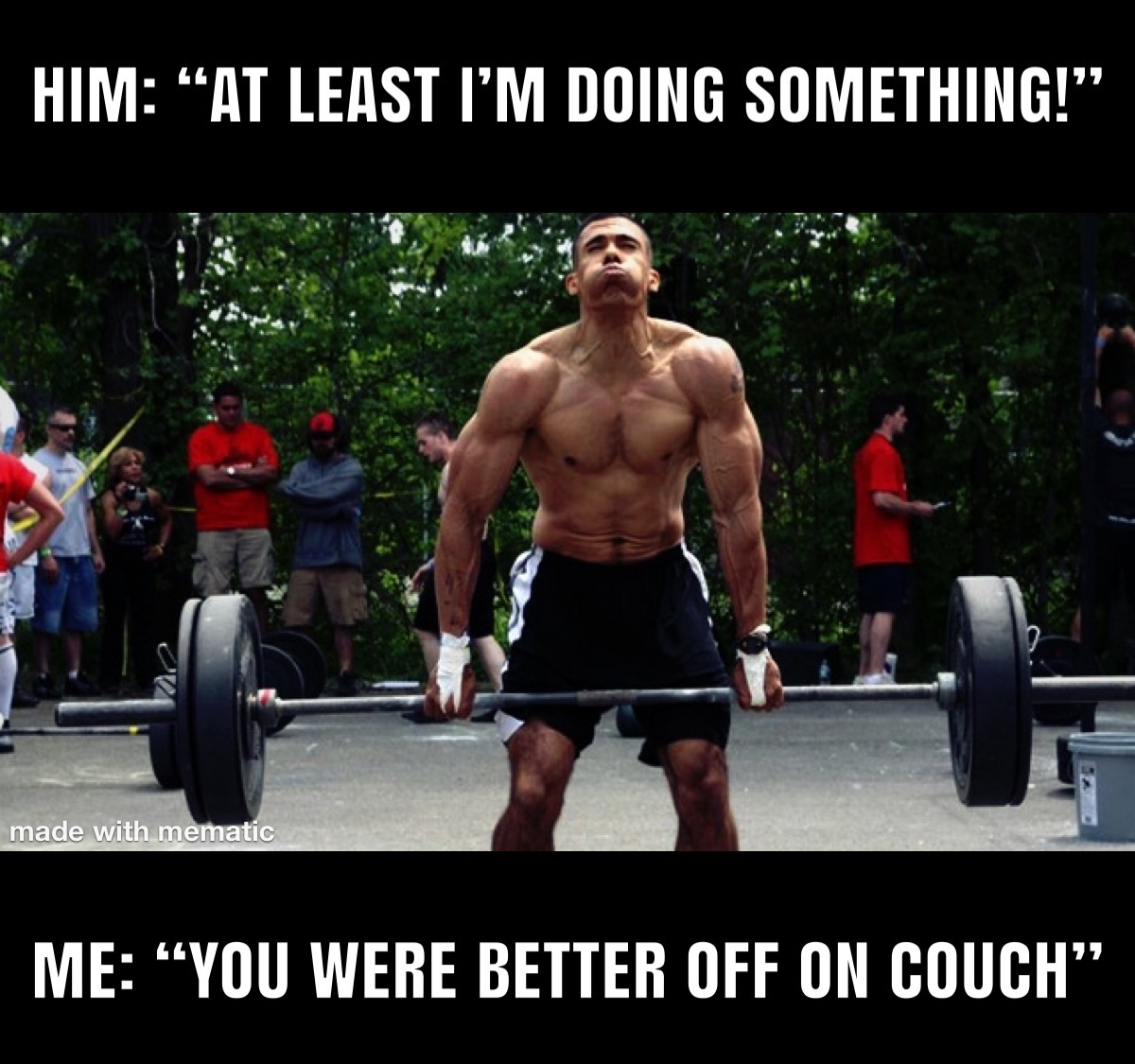
The same goes for the below Lunge exercise. The picture on the Left is bad alignment (poor centration) for this lunge, which means everything else will be off. Again, this guy is training to suck faster it seems. His knees and soft tissues will be inflamed in a bad way (especially if he was using weights!) and his musculature will certainly develop imbalances in every way.
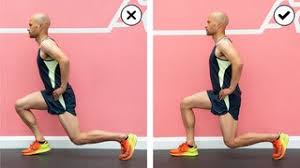 I feel bad for his glutes….
I feel bad for his glutes….
Next time you are at the gym, check out the bad alignment on 90% of weight lifters and then consider the stress (load) they are putting on that bad alignment. Makes you wonder what, exactly, they are trying to accomplish…
Breathing
Respiration is a book unto itself, so ill be brief. Here is a picture of a proper breathing pattern:
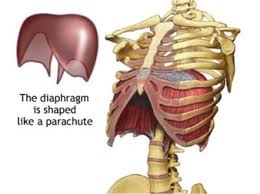
This breathe should be 360 degrees, not just “belly breathing”. Notice how the diaphragm descended and expanded the ribs. That’s a proper inhalation.
Note that when you breathe in, your diaphragm lowers like a reverse parachute and expands the ribs. The air directs “down and around” in a 360 degree manner, which makes a lot of cool things happen, but IF, and only IF, you are breathing properly. Properly means even the Diaphragm needs to pass the A,B, and C test!. If that important muscle is out of alignment, then you aren’t even doing the most basic movement right—breathing!
Besides the imbalance and postural issues you will get with improper breathing, there is another reason I use it as part of my exercise selection test: Inhalation is a “sympathetic activity”—think “Fight or Flight“, which allows you to get fired up for intense activities, like lifting weights, or picking a tree off your child. Without this sympathetic nervous system response, humans would have been doomed immediately back in the day.
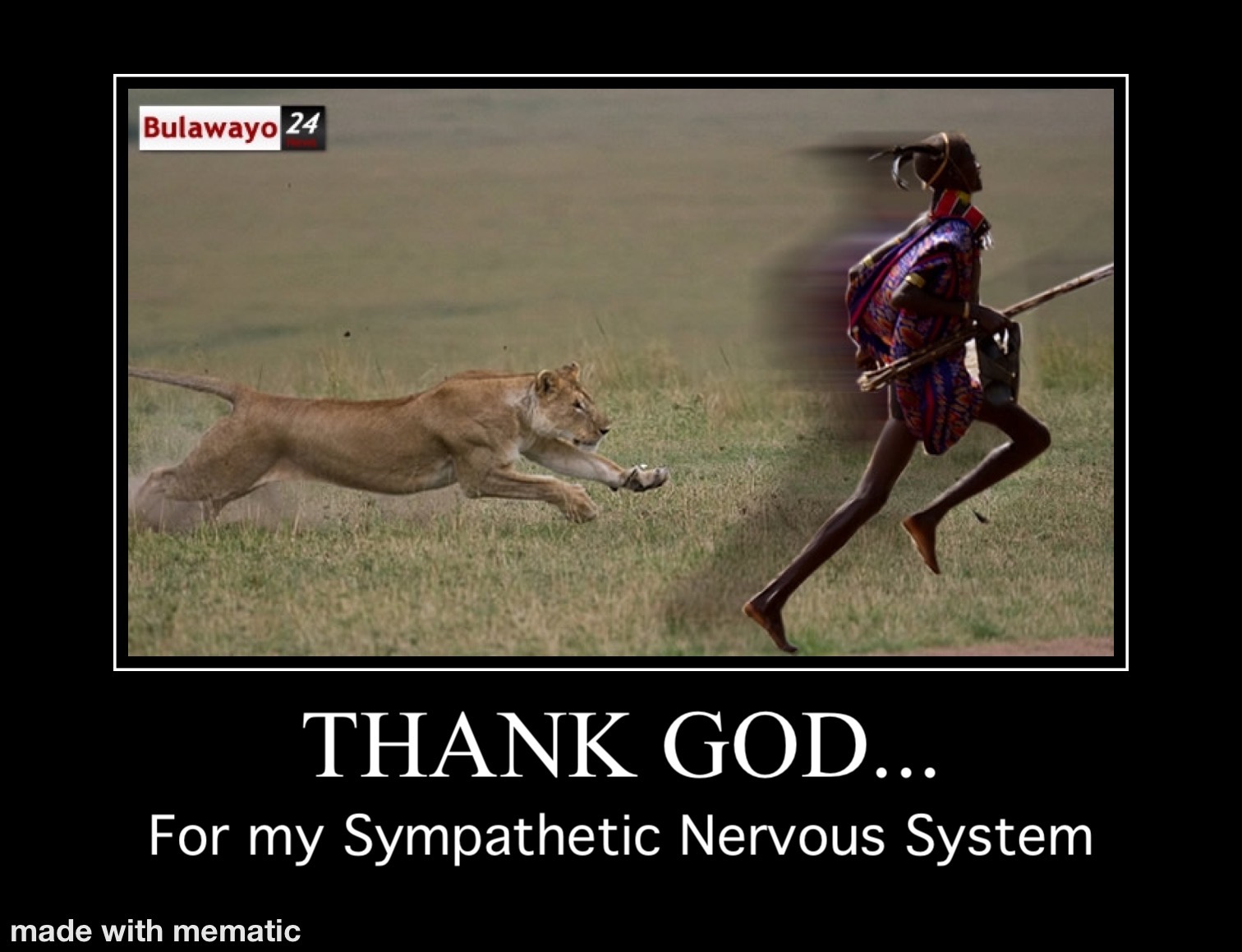
On the flip side, exhaling does the opposite: it raises the diaphragm back to its resting position, and brings the ribs back down. A key point to understand here is that exhaling, not inhaling, is a “parasympathetic” activity. Think “Rest and Digest”. For various health reasons, this is exactly what you want to concentrate on for 99% of your day. STRESS RELIEF and RELAXATION are keys to living longer and keeping your stress and inflammation in check, and they are easily achieved with proper breathing at rest. So save your sympathetic energy for your workout or if you are in danger, and go parasympathetic the rest of your life.
As always, this is easier said than done! When you first try to breathe in slowly (4-6 seconds) and exhale even longer than that (6-8 seconds), it will tire you out, guaranteed. Try it right now!!!! But practice makes perfect folks, and I promise you will get better at it.
And I’m gonna keep using this picture below showing a solid rest and digest, because it just never gets old…
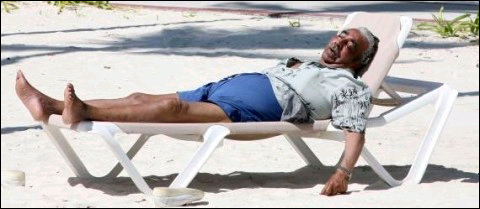 Resting and Digesting….
Resting and Digesting….
In terms of breathing during exercise, you need to breathe how I describe above, however, there is a catch: the intensity of the activity that you are doing will dictate how long and large those breathe cycles are. If I ask you to perform a heavy lift, I’d want you to take a larger inhalation than usual, then actually cement that pressure into your core (known as bracing), and not give a relaxing exhale; but rather what I would call a “forced exhale”, which will ensure your core stays engaged. So not only does breathing help you relax, it keeps you SAFE during heavy lifts.
Pressure regulation is the name of the game in lifting weights. I will write a post on this another time, because it’s THAT important.
In case you were wondering, Breathing during cardiovascular exercise is the opposite: bracing and keeping your abs tight during aerobic work will just tire you out way quicker and ruin your workout, besides making your movement robotic in nature.
Instead, I want you to try to relax-breathe DURING your cardio. Sounds odd, but the better you are at this, the longer and quicker you will be able to maintain whatever you are doing! You will be giving your muscles a constant supply of oxygen so you don’t go “anaerobic” and gas out the next minute. You are also telling your brain to stay more on that “Rest and Digest” side than the panicky Fight or Flight side!
The Kenyans are pro’s at this: check out this picture – not too stressed and almost relaxed at the 2-hour mark…
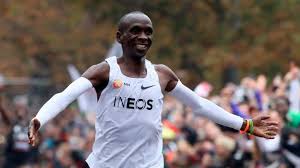 Another relaxing jog through NYC
Another relaxing jog through NYC
So learn to breathe right; during exercise and at rest. Both the same direction-wise, but different pressure-wise. Focus on that exhale, your life will thank you!
Here is a quick breathing tutorial:
Last but not least, Control
Can you control your movements and not be a shaky, wobbly mess? If you are unstable and shaky, you are not keeping tension on the right muscles, and are just being plain unsafe. Add load to an unstable movement that you can’t control, and you magnify this.
Take the picture below: if he can maintain control and stay balanced, more power to him; but if he can’t, and he is shaking all over as most doing this exercise will, do you think he’s “hitting” his legs or improving his balance? Exactly.
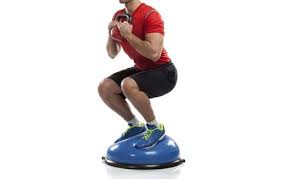
Further, more stable joints > more force production> more muscular stimulation. This is really important if your goal is aesthetics and muscular development.
So how do you know if you are stable? Glad you asked? Besides the shaking and wobbling, look at the breathe! Can you pause at any time in the movement and maintain proper breathing? If not, and they start to look panicked, then you are not in control.
Wrapping It Up
Going forward, make the A,B,C’s your “Check Yourself Before you Wreck Yourself” system: If you lift weights, try performing pauses 90% of the time at various points of the exercise, because during pauses, the A, B, and C’s are all magnified. If you aren’t aligned right, it won’t look or feel right, and holding yourself there will make it more obvious. If you can’t breathe in the paused position, the intensity/load is too high for you to handle, and if you can’t control it, well then you are just being an idiot even loading it, and you are surely going to shake and wobble in that paused position.
Below is a classic exercise (the pistol squat) that I tried for years, and was a disaster at….none of my A,B,C’s were on point, so i simply shelved it and saved my knees…
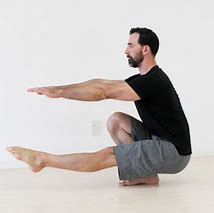 i looked nothing like this when i tried this…
i looked nothing like this when i tried this…
*Something I didn’t mention here is beyond common sense, but rarely followed; if your exercise passed the ABC test, but it hurt and was painful, that means don’t do it! Pain is the strongest signal your brain has to protect you against yourself.
So I hope you stayed with me here and I at least have you questioning some of your exercises–next time you go for a jog, or do push ups, ask yourself:
- Am I Aligned right?
- Can I Breathe right during this?
- Can I actually Control this exercise?
If you want personal coaching by yours truly, click the link below to inquire about a free consultation so you can get started!
https://www.trainerize.me/profile/brianmahoney/Brian.Mahoney
Stuff to read if you are into it:
https://www.ncbi.nlm.nih.gov/pubmed/25066518 – Muscle activity and spine load during pulling exercises: influence of stable and labile contact surfaces and technique coaching.



